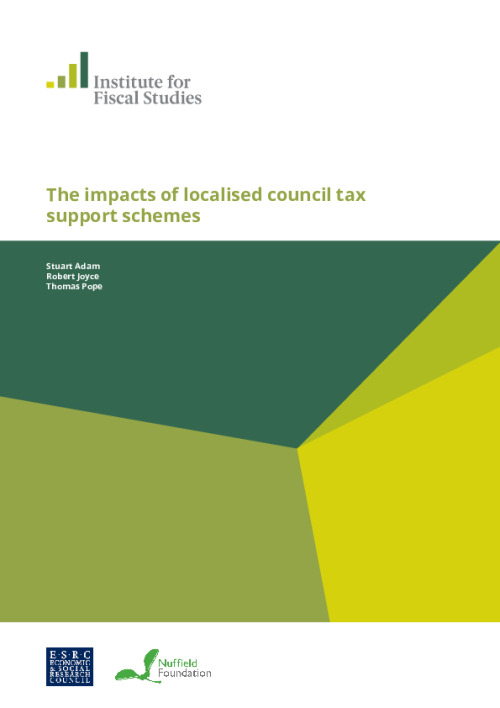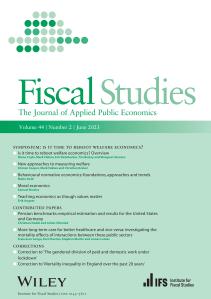In April 2013, council tax benefit (CTB), which provided help for low-income households with their council tax, was abolished. In its place, local authorities (LAs) in England were charged with designing their own council tax support (CTS) schemes for those of working age – though they were obliged to provide a centrally determined (and largely protected) level of support for pensioners. With reduced funding made available to them by central government, most LAs chose CTS schemes that were less generous than the CTB system they were replacing, with some low-income households having to pay council tax for the first time and others seeing their tax liabilities increase.
CTS remains a significant part of our system of means-tested support. Across Great Britain, it was paid to 4.9 million households in 2017–18 – more than any other meanstested payment. It cost LAs £4.1 billion, which represents an aggregate reduction of about 11% of gross council tax bills (leaving them with £33 billion of net council tax revenue). Spending on the 2.4 million working-age claimants in England – the focus of this report, since it is their entitlements that now vary between LAs – came to £1.8 billion, implying an average award for those claimants of £770 per year.
Five years on from the localisation and funding cut for CTS, this report looks at how LAs’ CTS schemes have evolved since they were first introduced, and at the changing effects of these scheme choices on claimants and on LAs.
Using information on CTS schemes kindly provided to us by entitledto and the New Policy Institute, we first describe the evolution of schemes since they were first introduced and examine how different kinds of LA have chosen different kinds of CTS scheme. We then use the IFS tax and benefit microsimulation model to estimate the effects of these reforms on household incomes and work incentives. Using this information on scheme choices and the effects on households, we assess how households have responded to the changes. We use regression techniques to compare how outcomes have changed differentially in otherwise-similar LAs that chose different CTS schemes, allowing us to robustly identify the causal effects of scheme choices. Finally, we use similar techniques to evaluate the effect of losing CTS entitlement on outcomes at the household level by comparing the trends in outcomes of otherwise-similar households whose CTS entitlement differs because of the LA in which they live.
This should be useful to English LAs – and the Scottish and Welsh governments – which continue to be tasked with setting CTS schemes, providing them with evidence on the likely impact of different choices. It should be useful to those interested in the effects of the welfare reforms of recent years, of which the cuts to CTS form a part. And it should be useful to central government and others seeking to understand how local councils make decisions, the consequences of localisation and funding cuts, and how households respond to being given a new or bigger bill to pay.
Going forward, the roll-out of universal credit (UC) – a major and troubled reform to the benefit system, integrating six working-age benefits and tax credits into one – has significant consequences for CTS, and LAs will need to consider it in the design of their schemes (as some are already). This report, however, analyses CTS scheme choices and their consequences in a period before UC is mostly rolled out. We therefore do not address this crucial issue directly in any depth – but we will do so in future work, and in the meantime we hope that our findings here will help LAs considering changes to their scheme in response to UC to understand better what the impacts might be.











